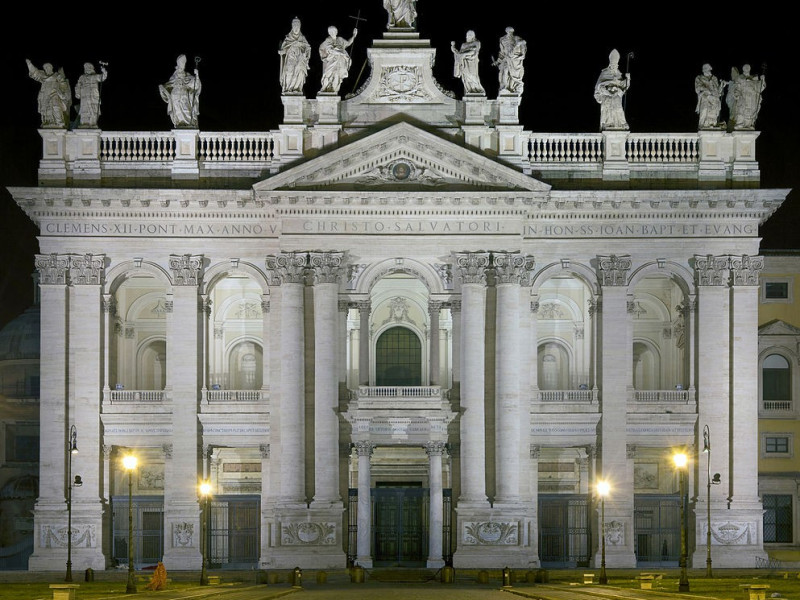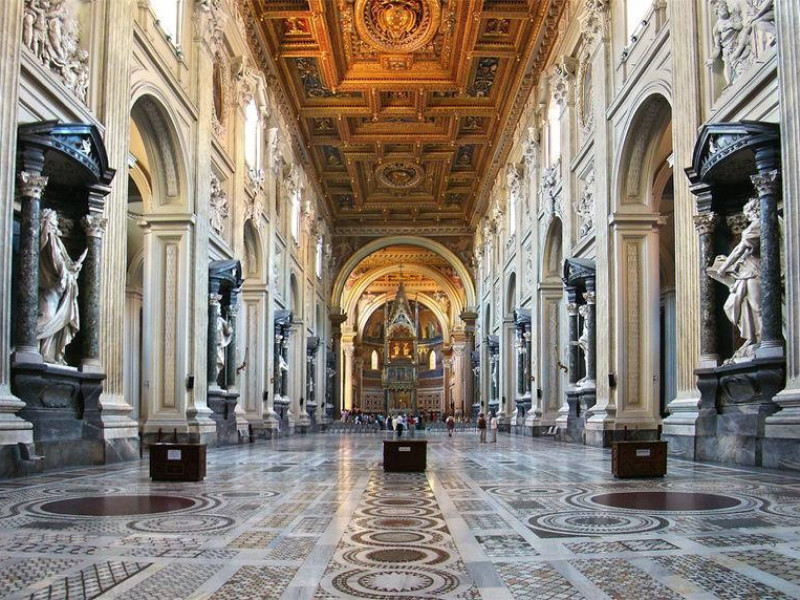Basilica di San Giovanni in Laterano (Piazza San Giovanni)
The Basilica of the Holy Saviour and the Saints John the Baptist and John the Evangelist at the Lateran (known simply as "St. John in Lateran") is the first of the four papal basilicas, the oldest and most important of the West. The Basilica was built in the fourth century, in the area known as "Horti Laterani" (ancient possessions of the Laterani family), and consecrated by Miltiades to the Redeemer in 313, following the edict that had legalized the Christianity. The dedication to the Holy Saviour is due to Pope Sylvester I who, in 324, declared the church and the adjoining Lateran Palaces "Domus Dei". The primitive aspect of the Basilica is known by the descriptions of the sources, in which it's cited as "Basilica Aurea" (oblong, with five aisles divided by columns, with beamed ceiling). Sacked several times during the Barbarian invasions, it underwent several restorations and modifications, including the addition of seven speakers. The new building, opened at the beginning of the tenth century, respected the proportions of the Constantinian Basilica, adding a new baptistery and the dedication to St. John the Baptist. Between 1297 and 1300 it can be dated the first interventions of Giotto: a decorative cycles during his second stay in Rome. The peak was reached for the first celebration of the Jubilee, in 1300. On his return from exile in Avignon, the Popes ordered to move their residence to the Vatican, and the Lateran lost some of its importance. It was Pope Innocent X to decide for a radical rebuilding of the Basilica, entrusting the work to Borromini (medieval building remained were the floor, the ciborium and the apse mosaic), who created one of his greatest masterpieces: enclosed columns of ancient aisle in new pillars alternating arcs; in second order alternated to oval windows frames with floral motifs. The Palladian facade, among the most evocative of Rome, was designed by Alessandro Galilei in 1732. In the nave are statues of the twelve Apostles (works by various artists as Rusconi, Legros and De Rossi); the main chapels are: Massimo, Torlonia, Casati and Corsini, with sculptures of Simon and Francis Martinez. The north transept houses the sixteenth huge organ by Luca Biagi, decorated by Giovanni Battista Montano. In the apse there is the huge mosaic of Jacopo Torriti and Jacopo da Camerino, depicting the Virgin presenting the client, Nicholas IV, to the Saints.


